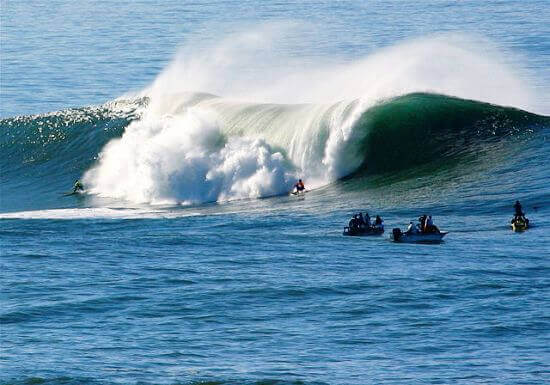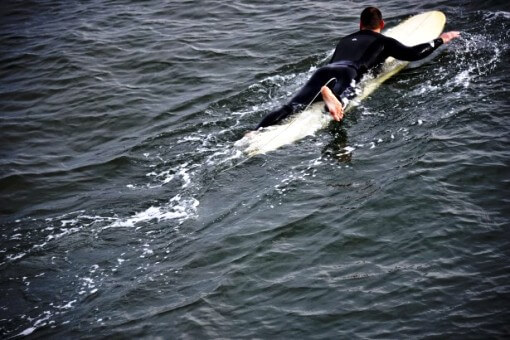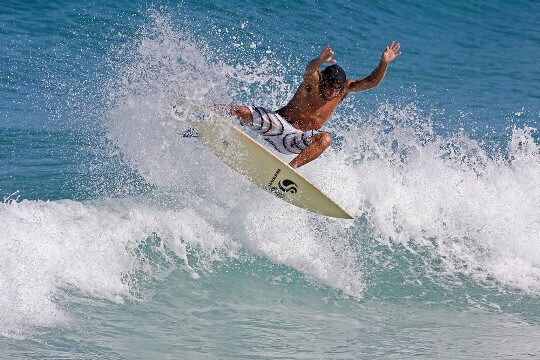Get Better At Surfing: Become An Intermediate Surfer
If you are reading this post on how to get better at surfing for beginners, it means you are interested in this exhilarating water sport.
Well, it can be a little frightening, just as stand up paddle boarding is. However, if a ship never leaves the safety of the harbor, we would not discover new lands.
So, you have to start somewhere! Thus, you need simple beginner tricks and tips for surfing beginners.
In another article, we looked at easy tricks for surfing for beginners. Now, we want to take you to another level, to become an intermediate surfer.
Keep reading as we explore 10 super tips that will help you get started on your surfing experience.
How to Go From Beginner to Intermediate Surfer
You cannot stay at the same level in surfing. Thus, you need to upgrade your surfing skills so that you can enjoy the full thrill of this water sport. Here are things that you can do to upgrade from beginner to intermediate level in surfing.
Know the waves
The first thing that you need to know is what is expected of an intermediate surfer. By intermediate, we mean that you are no longer a beginner.
So, what are some of the things that an intermediate surfer can do?
There is one super important thing to know and do as an intermediate surfer. You must know how to paddle out to catch your wave alone. Once you have mastered this art, you are ready to become an intermediate surfer.
Another thing that helps you to transition from beginner to intermediate surfer is the ability to catch both broken and unbroken waves and ride them to the shore.
But first, what is a broken wave?
This kind of wave turns over itself when it reaches the crest (the topmost part of the wave). It is a turbulent wave, and knowing how to surf a breaking wave is quite the Holy Grail of surfing. See the picture below of a breaking wave:

There are four types of breaking waves – spilling, plunging, collapsing and surging breakers.
These waves are dangerous to surf. However, you can catch a wave after it has broken and ride it to the shore. But this requires some practice.
The reason for this is that it is hard to stand up on your board on a breaking wave.
What is an unbroken wave?
In surfing, the unbroken wave is also called the clean wave. Every intermediate surfer wishes for this kind of wave.
At the same time, every surfer aims for one thing only – the drop on the clean wave. This is where you get to ride down the wave from its crest.
The weightless feeling of the drop is something to really look forward to in your surfing experience.
As an intermediate surfer, practice how to catch an unbroken wave. You can try to catch the chaotic breaking waves later.
Riding an unbroken wave feels completely different from what you would feel catching a broken wave. You can read this very helpful resource on how to catch a wave.
Learn what works for you
Everything that we teach you about surfing here is just to guide you to become better. When you do get on that board, it is all about you with the wave and the board.
Thus, over time, intermediate surfers find something that works for them! You need to find the tricks that really work for you.
For instance, if you are tall, you will have to find a better way of popping up from the board. Thanks to your high center of gravity, you will have more trouble popping up than a short person.
There are different ways of popping up. First, you can try popping up from the tips of your toes. This method is mostly possible for young guys. Sorry if you are 60, this might be hard on your knees.
The second method of popping up is when you have to do it from the hips. It is a complex move where you have to place your hands below your rib cage and then push off the hips as the board catches the wave.
There is also a third, perhaps even a fourth method for popping up. Heck, you can come up with a trick that works for you.
Choose the right board
This is one of the most important surfing tips for intermediate surfers. In the market, you will find all manner of surfboards. In reference to the board design, here is what you should know:
- Flat or almost flat surf boards are perfect for catching the small waves
- Curvier boards are best for high wave surfing. It is possible to get a board that is not too flat or too curvy for catching all types of waves.
Know how to steer your surfboard
If you want to proceed from beginner to intermediate surfing level, you must master the skills of steering a board. Making surfing turns is quite something!
Experts say that you actually steer with your head. So, you first see where you are going, by turning your head that way. Your body then follows your head and the steering of the board commences.
To get a feel of how the surfboard steers, you can try leaning from rail to rail in quick succession as you ride a small, unbroken wave to the shore. This will give you a feel of how a board changes direction.
Know how to build speed
When you are learning how to surf for beginners step-by-step, you will hardly work on your speed. The main thing is to paddle to the wave and ride it back.
But as you seek to know how to get better at surfing, you must know how to build speed on your surfboard. One of the intermediate surf speed tips is to lean forward while the board is in motion.
After catching unbroken waves, you need to know how to compress and decompress at certain points in the wave.
Practice more often: How to get better at surfing
How to be a surfer takes really long! Therefore, you need to do a lot of practice with every opportunity that you get.
Making surfing turns and knowing other surfing tips for intermediate surfers is not going to help if you do not practice them.
It must be very thrilling to watch surfers catch a wave and make the drop from the crest. What you don’t know is just how long it has taken that surfer to get to that skill level.

Make sure you monitor your surfing progress. To do that, have someone capture some of your moments on the surfboard on camera.
Later, you can review the footage to see the areas that you need to work on to enhance your surfing progress.
Conclusion
Those are the 5 most important tips for how to get better at surfing. Of course, there are other things such as knowing how to make turns, how to monitor the wave, knowing your skill level and so on. But we feel that you learn some of these in your beginner surfer level.
You will not progress from beginner to intermediate surfer in a day or two. However, with practice, you can do it in about a week or two.

